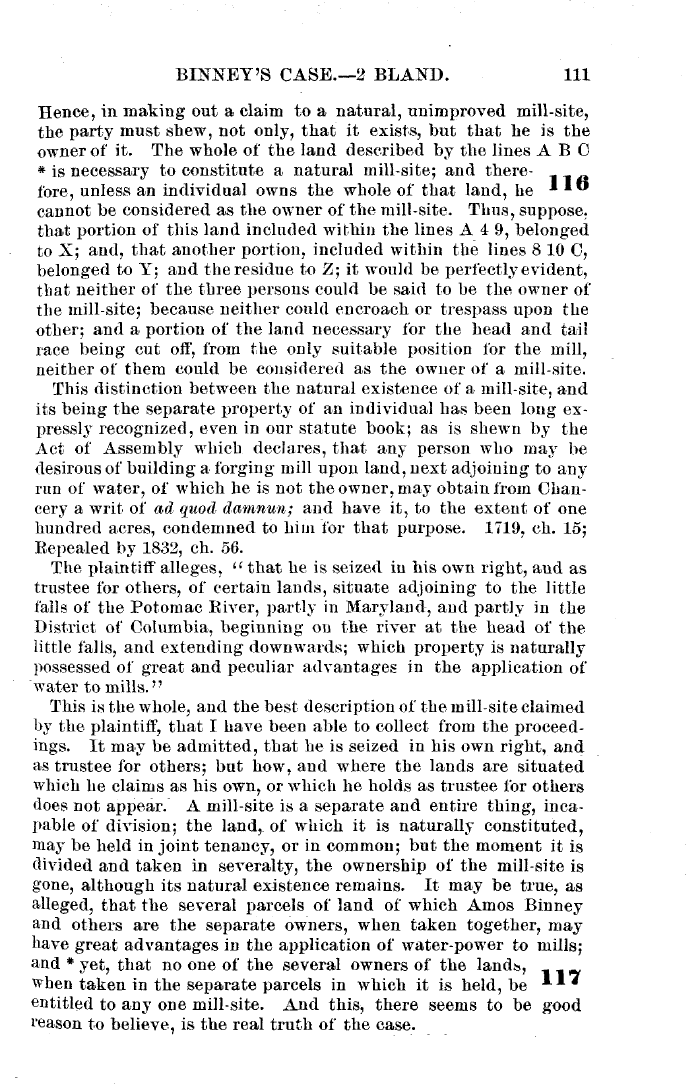|
BINNEY'S CASE.--2 BLAND. 111
Hence, in making out a claim to a natural, unimproved mill-site,
the party must sbew, not only, that it exists, but that he is the
owner of it. The whole of the land described by the lines A B C
* is necessary to constitute a natural mill-site; and there-
fore, unless an individual owns the whole of that land, he 118
cannot be considered as the owner of the mill-site. Thus, suppose,
that portion of this land included within the lines A 4 9, belonged
to N; and, that another portion, included within the lines 8 19 C,
belonged to Y; and the residue to Z; it would be perfectly evident,
that neither of the three persons could be said to be the owner of
the mill-site; because neither could encroach or trespass upon the
other; and a portion of the land necessary for the lead and tail
race being cut off, from the only suitable position for the mill,
neither of them could be considered as the owner of a mill-site.
This distinction between the natural existence of a. mill-site, and
its being the separate property of an individual has been long ex-
pressly recognized, even in our statute book; as is shewn by the
Act of Assembly which declares, that any person who may- be
desirous of building a forging mill upon land, next adjoining to any
run of water, of which he is not the owner, may obtain from Chan-
cery a writ: of cad quod, daninu-n; and have it, to the extent of one
hundred acres, condemned to hint for that purpose. 1719, ch. 15;
Repealed by 1832, ch. 56.
The plaintiff alleges, 11 that he is seized in his own right, and as
trustee for others, of certain lands, situate adjoining to the little
falls of the Potomac River, partly in Marcland, and partly in the
District of Columbia, beginning on the river at the. head of the
little falls, and extending downwards; which property is naturally
-possessed of great and peculiar advantages in the application of
water to mills."
This is the whole, and the best description of the mill-site claimed
by the plaintiff, that I have been able to collect from the proceed-
ings. It may be admitted, that he is seized in his own right, and
as trustee for others; but how, and where the lands are situated
which he claims as his own, or which he holds as trustee for others
does not appear. A mill-site is a separate and entire thing, inca-
pable of division; the land,. of which it is naturally constituted,
may be held in joint tenancy, or in common; but the moment it is
divided and taken in severalty, the ownership of the mill-site is
gone, although its natural existence remains. It may be true, as
alleged, that the several parcels of land of which Amos Binney
and others are the separate owners, when taken together, may
have great advantages in the application of water-power to mills;
and * yet, that no one of the several owners of the lands,
when taken in the separate parcels in which it is held, be 11 "~`
entitled to any one mill-site. And this, there seems to be good
reason to believe, is the real truth of the case.
|

